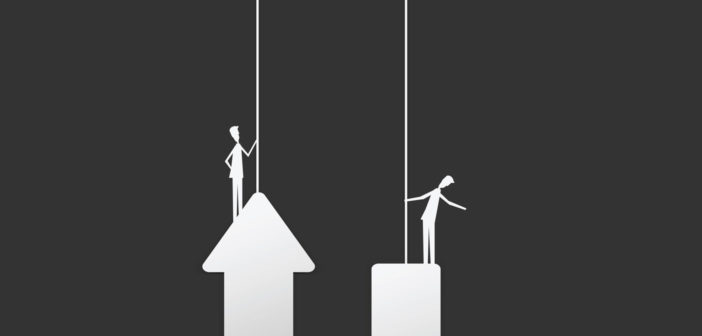Concerns have been raised by some that the COVID-19 recession will lead to economic deflation, while others say inflation. Which outcome is more likely?
Deflation stems from a collapse in the money supply while inflation stems from a rapid expansion of the money supply (i.e. “printing money”). The money supply collapses when there is a financial crisis, which occurs when there are widespread defaults on loans. Banks and other lenders do not get repaid, which means they cannot repay those who supplied the funds for these loans. People such as bank depositors thus get wiped out and since bank deposits are part of the money supply, the money supply falls. This is what occurred during the Great Depression, which was really a massive financial crisis. Widespread defaults and bank runs led to a third of the banks in the U.S. failing from 1929 to 1933. The money supply fell by a third, leading to 30% deflation. This occurred due to a failure by the Federal Reserve to act as a lender of last resort to banks facing these issues, which would have prevented their failures. The Federal Reserve is not making this mistake again. Federal Reserve Chair, Jerome Powell, recently announced that the Fed will not raise interest rates through 2022, signaling that they will continue to aggressively expand the money supply and act as a lender of last resort.
The more immediate concern, in my view, is inflation. Inflation occurs when the money supply expands more rapidly than the economy’s production of goods and services. Approximately 40% of the economy was idled during the height of the shutdown. Since income is generated by producing output, income would have fallen by 40% during this time. The federal government bridged this gap by adding $5 trillion to the federal deficit using various stimulus measures, such as the CARES Act that paid most people $1,200 along with expanded unemployment benefits. Essentially, this $5 trillion was printed. Since much of the economy was idled, options for where to spend this money were limited. Much of it went toward paying debt such as mortgages and buying essentials. It is telling that grocery prices rose in April by their fastest pace in 50 years, signaling inflation. This was masked in the overall consumer price index given that much of the economy was idled and thus, didn’t see prices rise.
Treasury Secretary Mnuchin recently said, “we can’t shut the economy down again.” I agree. If there is another shutdown, more stimulus spending will eventually be inflationary. However, absent stimulus spending, income will fall to match the lower level of output, leading to a wave of defaults, bankruptcies, deflation and a financial crisis. Eight percent of mortgages are currently in forbearance. If these turned into defaults, it would be on par with what was experienced during the Great Recession. It is not possible to keep the economy idled until the threat of COVID has passed without causing a massive, unimaginable, economic catastrophe.














